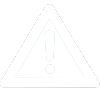In week one, Miles will introduce you to the influences and inspiration behind his famous inking artwork. You will be examining the techniques behind old Renaissance drawings. Then, you will explore the materials needed for inking and watch Miles demonstrate hatching on paper using straight lines
In week two, Miles will demonstrate hatching curvilinear and squiggling lines. You will study the signature mark-making styles of Old Masters like Leonardo da Vinci, Albrecht Durer, and Michelangelo. Then, Miles will teach you how to apply what you have learned in a compositional study of basic forms.
In week three, Miles will teach you how to create an ink copy of the master drawing, “Study to Battle of Cascina” by Michelangelo. You will learn how to start the block-in using a mechanical pencil and slowly build up the drawing using a dip pen. This lesson will help train the hand pressure and the direction of your mark-making.
In week four, you will learn how to create a still-life drawing in ink using a direct method. Miles will share how he creates different levels of diluted ink to work from light to dark. You will practice taking your time to lay in the initial drawing directly with ink and making adjustments throughout the process.
In week five, Miles will teach you how to draw the hands from life using ink. You will learn that your hands are the most convenient and accessible references to practice from. Miles will show you how to capture the gestures of the hands and hatch around the forms using a variety of inking tools.
In week six, you will study how to create an ink drawing of a cat using a dip pen and a brush. In the demonstration, you will notice how Miles varies the direction of his mark-making to achieve different surface textures. Throughout the lesson, Miles will also talk about the importance of taking good photo references in your art practice.
In week seven, Miles will teach you how to create an ink drawing of a tiger. He will begin by adding a wash of the contours and shadows using a medium-sized brush. Then, you will watch Miles hatch in the hair of the tiger with a fine detail brush.
In week eight, you will discover the process of drawing an urban landscape directly with a ballpoint pen. Miles will show you how to keep the initial block-in light, then take your time to introduce the small details using a variety of mark-making.
In week nine, Miles will teach you how to create two landscape drawings using a combination of ink wash and line. You will learn to begin the drawing with a light wash using both big and small brushes. Then, Miles will show you how he refines the landscape using different levels of diluted ink and a dip pen.
In week ten, Miles will demonstrate how to draw a self-portrait from life on toned paper using ink. You will learn how to tone your paper using a combination of watercolor and ink. Miles will show you how to block in the portrait with a very light diluted ink, starting from the eyes.
In week 11, Miles will teach you how to continue developing the self-portrait drawing. First, you will learn to self-assess your drawing and make necessary adjustments using a dip pen and a brush. Miles will introduce you to white ink and white gouache as he demonstrates how to apply them to the areas of highlights.
In week 12, Miles will guide you through his process of completing the self-portrait drawing. You will learn how to adjust the overall values of the drawing, emphasize the core shadows, and introduce the reflective lights. Miles will show you how he renders small details like beards and eyelashes.
Common Questions
Yes, this course is appropriate for the beginner and intermediate levels.
This course includes downloadable assignment PDFs, that help you practice the materials taught by instructor Miles Yoshida. Keeping up with these assignments will maximize your learning outcomes.
A material PDF list is linked in each lesson under the description. Please check the file to see what you need to prepare.
Although we highly recommend that you use ink for this course, all New Masters Academy courses are designed to be done traditionally or digitally. Software changes constantly, but the fundamentals stay the same. It will be up to you to translate the information that you are learning to your software of choice.

 UPDATE! October 1st, 2023: This version of the website will no longer receive updates. Please transition to the new website for the best experience.
UPDATE! October 1st, 2023: This version of the website will no longer receive updates. Please transition to the new website for the best experience. 











CONNECT
New Masters Academy
16182 Gothard St
Huntington Beach, CA 92647
Contact US